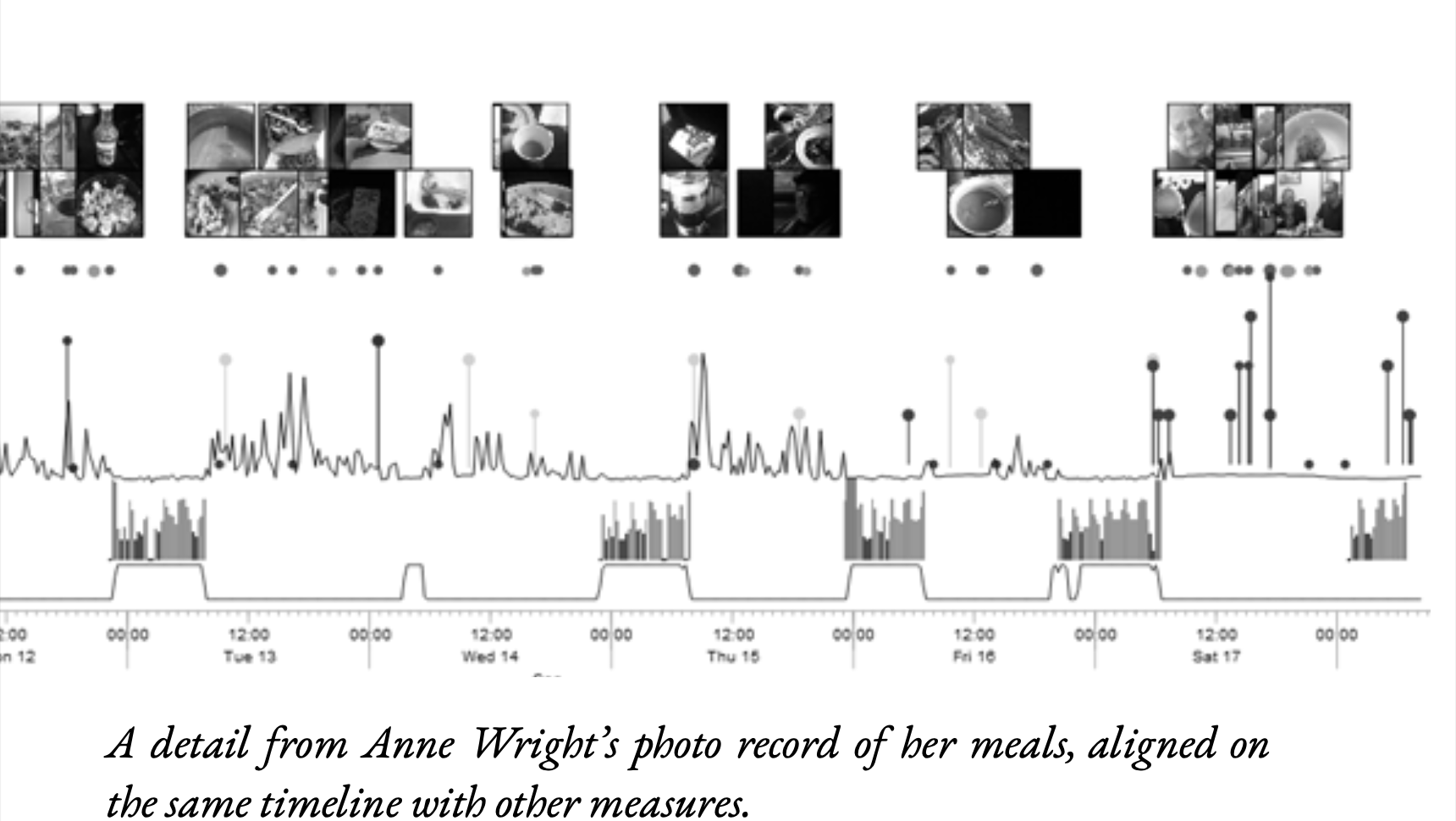Andyʼs working notes
About these notesPersonal Science - Gary Wolf
By Gary Wolf, a guide to effective Quantified self-research.
I’m surprised to find that this book is not primarily about the practical challenges of doing the personal science (i.e. how to take measurements easily and analyze them). Its primary focus is on helping you relate your personal concerns (e.g. about health) into research questions you can answer.
Relatedly, I love that the focus is on “health concerns”, rather than obsessive optimization, which is what I usually associate with the movement. It’s probably good that the book doesn’t use the name “quantified self” in its title.
Personal science asks questions about the life of the person who poses them: not questions about allergies, or pain, or sleep, or diet, but about my allergies, my pain, my sleep, my diet.
I really love how centered the book is on people’s problems. In How to Write Good Prompts, I more or less dodge the problem of what kinds of prompts to write and for what reasons—what problem is being solved. I jump straight into tools and techniques. There’s a brief section towards the end about the topic. This book inverts that structure and puts the reason front and center. It’s funny: reading Hacker News’s reaction to my writing on prompt-writing, and the confusion about what this was all about, I basically rolled my eyes. I wasn’t interested in answering that question when I wrote the piece. But I should have paid more attention to their reaction: I should have been much more interested in paying attention. All this comports with Gary Wolf’s 2021-07-10 email to me on serious contexts of use, of course.
The book pays a lot of attention to the practical cost of doing this work. It’s aware of the fact that doing this work is inconvenient and may often lead to wasting time. It’s clear-eyed about that, and suggests only using the methods in places where you really care about something.
I really enjoy how uninterested this book is in talking about gear, gadgets, software, etc.
I really like how “discovery” means not just “forming a conclusion” but “integration of insights from self-tracking into actions in everyday life.”
Very excited to read about “the future of personal science”!
Concerns to relay to Gary
- The section on phenomena lost me a bit because in my experiences with personal science, the most important and challenging criterion is relevance. You open the section with a sentence noting that, but it’s really hard to get right, and failures here often drown out the rest!
- I found myself really wanting to know what Robin Weis got out of her crying log and feeling irritated that the book talked up the “depth of reflection involved” but then didn’t describe any of it.
- Was confused in the discussion of Janet Chang’s microdosing experiment until I realized that the weights you’re reporting must be in terms of dry psilocybin-containing mushrooms (typically ~1% active psilocybin), as opposed to reporting actual dosages. The doses, as reported, are mega-macrodoses!
- Confused in the Thinking with Data section on reasoning patterns; the text notes that “argument cascades typically involve three analytical activities…” but the interesting parts of the example dialogs given previously are about noticing, deducing, etc. I found myself quite detached from the details of how to simply present the information, without centering on how that presentation leads to implications, insight, the next question, etc. In practice, those topics are discussed in the reasoning patterns sections, but the structure of the text mostly pivots on the technical element, rather than its connection to meaningful argument-conversation. (One thing I love about this book is that it avoids the typical “look, a chart!” attitude I normally associate with QS and instead focuses on real problems; this is the section where I feel the dialog regresses to a shallower “look, a chart!” stance)
- Found myself frustrated with the Seth Roberts cognitive baseline story: was teed up for something interesting, but given no taste of what was found.
- The Morris Villarroel passage irritated me. The impetus is interesting: he has a natural habit of recording interesting events; he wonders what he can learn from that data. My instinct would be to focus on the qualitative, since events are so heterogenous. But OK: graphing raw counts could compel me as a reasonable next step if you can tell me a story about how treating this kind of data quantitatively yields meaningful qualitative insight. The problem here is that the text shows the graph, says “you can see that his daily pace varies,” and then suggests no insights! I bet that, as you note, “the value of the notebook is…in the process of thinking about what counts as a landmark in memory,” but without actually discussing any of that thought, this reads as an oblivious instance of the worst kind of QS “look, a chart!” analysis.
